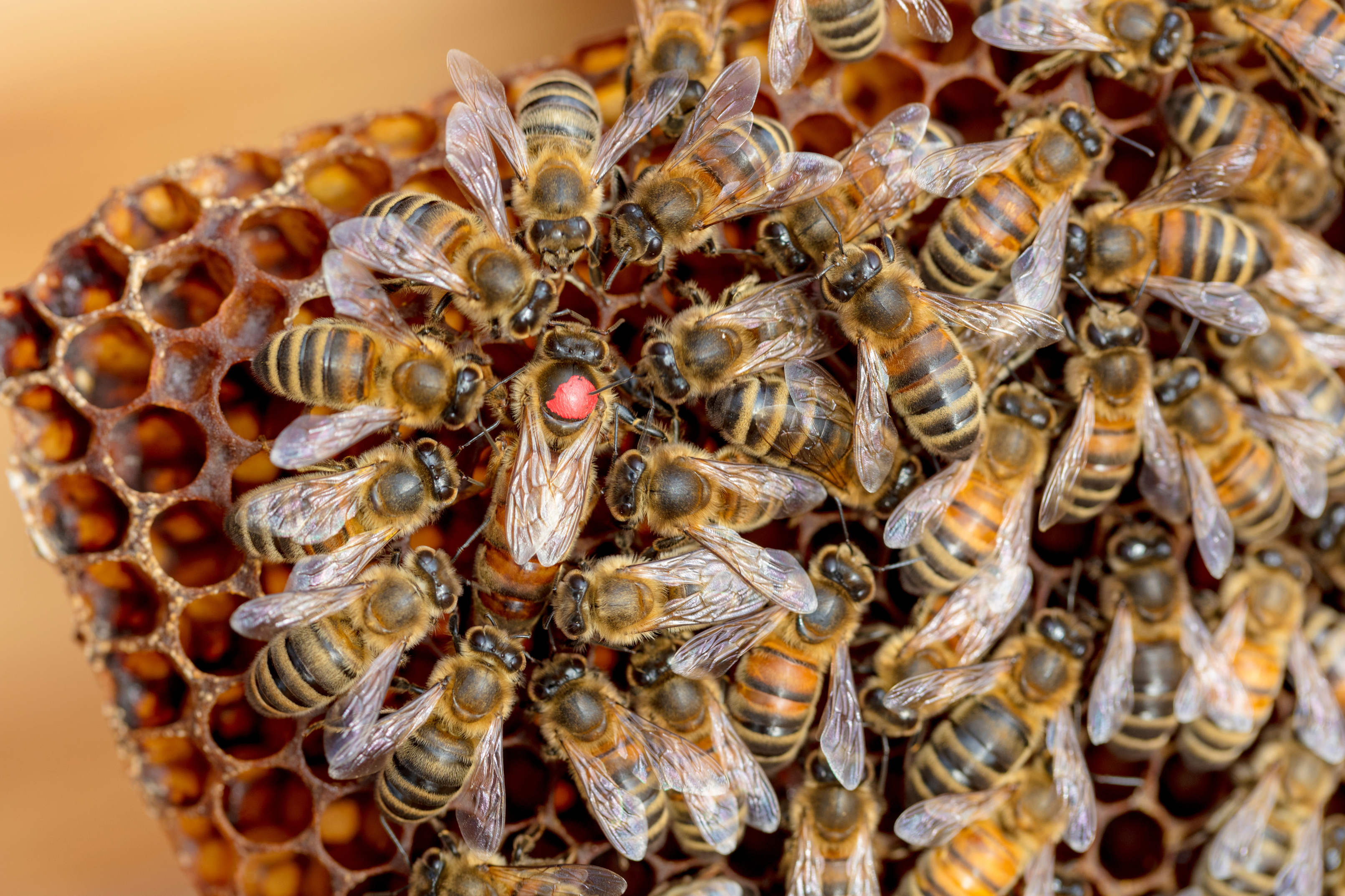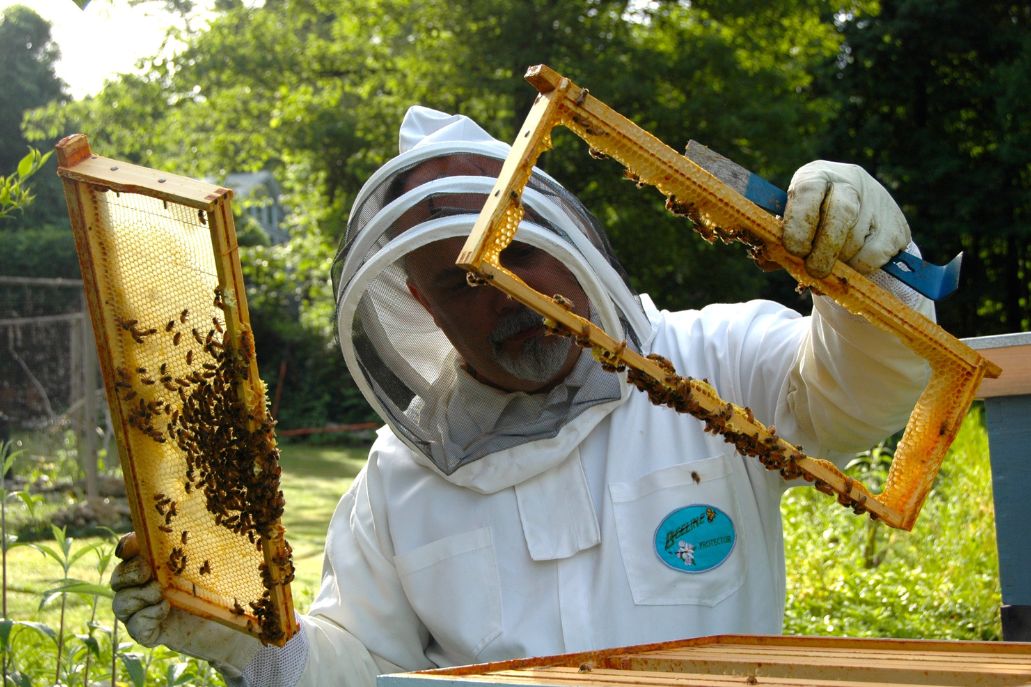The queen bee is the heart of the hive—without her, everything begins to unravel. While a hive may carry on for a short time without a queen, it will eventually decline without her steady presence. Knowing how to recognize the signs of a queenless colony can help you act fast and protect the health of your bees.
Why the Queen Matters
The queen lays up to 2,000 eggs a day in peak season, keeping the population strong. She also emits pheromones that help regulate the behavior and cohesion of the colony. Without her, not only does egg-laying stop, but the entire social structure of the hive becomes unstable.
1. Spotty or Missing Brood Pattern
A healthy queen lays in a tight, consistent pattern. If you open the hive and find random, scattered brood—or entire frames without any eggs or larvae—it could mean there’s no queen. Keep in mind that after a queen dies or disappears, it may take days before brood pattern irregularities show up.
2. No Fresh Eggs or Larvae
Eggs hatch into larvae after three days. If you don't see any eggs, and the larvae are already quite large, that’s a strong sign the queen has been gone for more than three days. Check multiple frames before making a conclusion—sometimes she’s just being shy.
3. Emergency Queen Cells
Worker bees will attempt to raise a new queen if they sense she’s missing. You might spot emergency queen cells, often hanging vertically from the middle of the frame, as opposed to the peanut-shaped swarm cells on the bottom edges. These emergency cells indicate the hive is trying to save itself.
4. Increased Aggression
Queen pheromones have a calming effect on the hive. When they’re missing, the colony can become more defensive, even aggressive. If your bees are unusually jumpy or are stinging more, it could be a red flag.
5. Presence of Laying Workers
In long-term queenless hives, some worker bees begin to lay unfertilized eggs. These only produce drones (male bees), which don’t contribute to foraging or hive maintenance. You might notice multiple eggs per cell, laid haphazardly on the sides instead of centered neatly at the bottom. This is a late-stage sign and usually means the hive is in serious trouble.
What To Do If You Suspect Your Hive Is Queenless
-
Double-check before acting. Queens can be hard to spot, and sometimes they're present but not laying due to stress or weather.
-
Introduce a new queen. You can purchase a mated queen or combine with another colony.
-
Let them raise their own (if resources allow). If the colony has young larvae and is strong enough, they may succeed in raising a new queen.
Honey Facts
Honey Bees have extreme sense of smell which allows them to find their hive and they dance when they return to the hive to tell the other bees where the flowers are. Also, 99% of the bee colony is composed of female bees known as WORKER bees. Worker honey bees transform the floral nectar that gather into honey by adding enzymes to the nectar and reducing the moisture.
SAMMY'S SOUTHERN HONEY


Thank You!
Each jar of honey purchased helps to keep our hardworking family business in operation, and allows Sammy to continue sustainable and ethical bee farming here in the heart of Louisiana. Add some Sammy’s Southern Honey sweetness to your life today!







